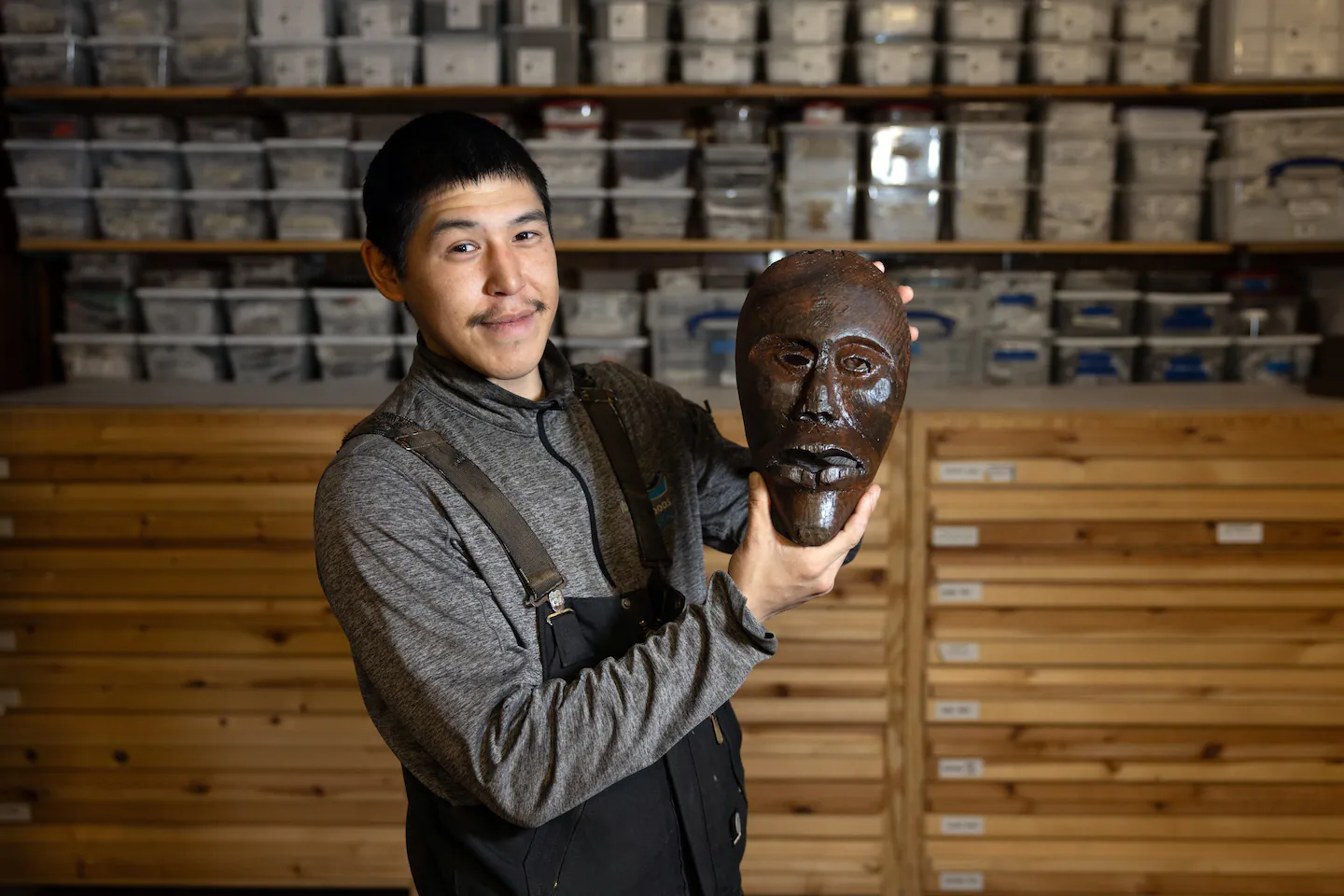Copyright The Boston Globe

In addition to upending life for residents, the storm ate into 60 feet of shoreline in a single night, destroying the dig site. In the days that followed, Quinhagak residents rushed to recover the artifacts washing ashore. There are most likely hundreds of village sites along the coast of western Alaska, where the frozen ground can preserve objects for centuries. But excavation is rare. Like many Native communities, Quinhagak’s elders initially felt that any disturbance of the site, which is considered sacred and contains human remains, would be a breach of cultural values. The artifacts were “waiting for us to tell their story,” said Warren Jones, Jimmy Jones’s father and the chief executive of Qanirtuuq, the corporation that owns the tribe’s land and represents its interests to the US government. “We have to do this for the future generation, they need to know where each and every one of us came from,” he said, recounting how he had persuaded the community to support the dig. “If we don’t, all these artifacts are going to be washed out.” Saving artifacts like these is all the more urgent as climate change bears down on the Arctic. As the planet warms and sea levels rise, shorelines are slowly eroding, even without a burst of damage from a typhoon. Sea ice now forms later in the year, giving more time for that erosion to happen. And the thaw of Arctic soils, known as permafrost, has caused the objects tucked inside it to begin decomposing. Archaeologists in Greenland have found remains of animal and human skeletons softening into a mush they call “butter bone.” The warming climate may also be enabling disasters like Typhoon Halong, said Rick Thoman, a climate specialist at the University of Alaska, Fairbanks. Before 2022, Thoman said, there was only one reliably recorded instance of a typhoon tracking far enough north to reach the Arctic. In recent years, there have been three. The Nunalleq dig began in 2009, a few years after Warren Jones reached out to Richard Knecht, an archaeologist at the University of Aberdeen in Scotland, known for collaborating with Alaskan Indigenous communities. The small town now boasts what is quite likely the largest collection of Yup’ik artifacts in the world. There are nearly 200,000 preserved in a cultural center that doubles as an archaeology lab and museum. Knecht, who is retired from the university but continues to lead the work, has seen coastal erosion destroy Indigenous heritage sites before: In the early 2000s, rising sea levels claimed a dig near Kodiak, Alaska, that he had been studying for nearly 20 years. Still, the damage to Nunalleq last month took his breath away. The recovery effort was well underway when he arrived a few days after the storm. Dozens of residents had already started rescuing artifacts by the boxful. Some, like wooden bowls, masks, dolls, and serving spoons, were in perfect condition. There were fragments of others, like kayak paddles, arrow shafts, and the soles of a child’s sealskin boots. The recovered objects are soaked with a preservative and carefully dried before being cataloged and stored in the town’s museum, a simple room stacked to the brim with boxes and drawers. The promise to keep the artifacts in town was the main reason Grace Hill, an elder in Quinhagak and president of the tribal corporation’s board, supported the dig. “Before, many of our objects were taken and not returned to us because there was no way to preserve them here,” Hill said. Now, Quinhagak residents are deeply involved with every step of the process. “That’s the best part,” she said. Today’s Quinhagak youth will grow up with an understanding of their history that previous generations didn’t have, said Dora Strunk, a retired teacher who runs the museum as a volunteer. It has become a cultural education hub that hosts field trips and traditional crafting workshops. “Some of them have their mouths wide open when they first open a drawer,” she said. “I tell them, these are from your ancestors.” Many of the artifacts are familiar. The dolls, from the time before contact with Europeans, resemble the ones that Strunk’s mother used to carve. There are also early versions of modern tools, like uluaq, a fan-shaped knife. The dig has also unearthed evidence of an often-recounted battle at Nunalleq. “That story became a reality,” she said. John Smith, one of the tribe’s elders, recounts stories that help Knecht’s team interpret the objects and has made many replicas of the artifacts found at Nunalleq. Knecht estimates at least 1,000 artifacts have been rescued since the storm hit. There are likely 10,000 remaining on the beach, he said, buried by a recent snowfall and frozen in the sand. If the weather doesn’t warm back up, the community will have to abandon recovery efforts until the spring. Although the town was spared from much of the devastation suffered by neighboring villages, like Kipnuk and Kwigillingok, several houses were flooded, and the storm surge came dangerously close to breaching the sewage lagoon and damaging the community’s fuel tanks. Hill called the storm a “wake-up call.” Now, she hopes Quinhagak can move to higher ground. “The greatest thing I want is to preserve all the things we have, as much as possible,” she said.



